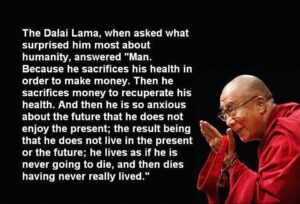Personal Training Success Story – Amy Weyhrauch
“Life is what you make of it. You can be happy or sad. It’s up to you.” Amy Weyhrauch’s dad. No one person epitomizes this phrase more then Amy. She is one of kindest most positive people you will ever meet. She is a mom to 4 kids and, it is this attitude that has propelled her to great accomplishments and the July member of the month.
When I first talked to Amy I found out that she had Ankylosing spondylitis. From the website of Spondylitis Association of America -“Ankylosing spondylitis (pronounced ank-kih-low-sing spon-dill-eye-tiss), or AS, is a form of arthritis that primarily affects the spine, although other joints can become involved. It causes inflammation of the spinal joints (vertebrae) that can lead to severe, chronic pain and discomfort. In the most advanced cases (but not in all cases), this inflammation can lead to new bone formation on the spine, causing the spine to fuse in a fixed, immobile position, sometimes creating a forward-stooped posture.” Amy, has the advanced kind, and she needed to get the right treatment and training otherwise she was in danger of her spine fusing. So I wasn’t too surprised when Amy first came to me moving like Frankenstein with a limp. She had a really hard time turning her neck and she was walking very gingerly. It didn’t take an Osteopath to see that she was in pain. Her number one goal was obvious…get out of pain! She was cautious for good a reason; she didn’t want to further hurt her body. You see this all started when Amy was playing tennis and she fell and hurt her right clavicle. No biggie, except that it wasn’t getting better and she was starting to feel worse all over. So she started the rounds with different doctors and they kept coming up with different diagnoses. There was even a significant amount of time where they thought she had Leukemia. Can you imagine the stress of that! Well it wasn’t that, thank goodness.
To describe in practical terms how the AS affects her I’ll tell you what I tell her. “Everything that you do is magnified. When somebody else doesn’t stretch for a day or so they get a little tight and hinder their healing. When you don’t stretch for a day or two your body starts to lock up. Literally!” And when she didn’t stretch as much as she wanted to she felt it-to the point where if she had just thrown up her arms and succumbed to fait you could have understood, but she didn’t. Amy has epitomized our 3rd Core Principle “Consistent Steady Improvement.” She has been in private training with us 3-4 days a week for a little over a year and she has made amazing progress. You will hear about it later on in her words, but I am so proud of her for:
- Being open to change
- Trying her best
- And maintaining that amazing attitude throughout the ups and down of her journey.
How Amy Got Personal Training Success
1) What made you decide you wanted/needed to start a program? My Ankylosing was the main reason to seek out help. It just made me feel so bad, and it is really hard to motivate yourself when you don’t feel good. I just kept giving myself excuses as to why I shouldn’t and couldn’t do it. Well I finally got to the point where I felt so bad that I reached out to a friend of mine, Liz Karp, and she recommended you to me.
2) What did you do before? Yoga Tapes, exercise tapes, tennis, hiking, sometimes skiing. I also had this chart that was given to me on stretches I should do for Ankylosing. But I knew I needed somebody to teach me the right way.
3) What results have you achieved since starting your program that you are proud of? Well I have lost 7-8% body fat and around 10 pounds, but what I am most proud of is the fact that I am a happier better person because I don’t hurt all the time. It got to the point where I didn’t want to go out and be social. The weight of that pain on me all day took all my effort and to think about spending more effort on going out was too much. I also LOVE that I now have tools to keep myself moving and feeling great. Not only the stretches and exercises but also the fitness journal you gave me was a big help especially at the start. It is eye opening to look back and see how you really did, not just how you thought you did!
4) Do you have a favorite exercise? Least? What do you like or don’t like about them? I do not like the Mountain Climbers! I love the wall stretch L5-S1, love the hip stretch (Glute Med). Actually I love all the hip stretches and all the spine stretches.
5) What are some challenges or goals you are currently working on? Weight loss is my next big goal along with staying out of pain and keeping my body mobile. I also want to keep changing my habits and keep getting better with the advanced workouts you guys have been giving me.
6) What do you like best about our program/ having a trainer? The knowledge that you guys have is invaluable. I also love that you are flexible. You guys always have a program ready, but if I come in and say I am feeling a certain way, you are able to change the program on the fly to meet my needs. I also really appreciate that you guys push me to levels that I didn’t think I could do before, but you never push me too far.
7) What advice would you give to the other SolCore Fitness members? KEEP IT UP! Keep coming to class. Keep doing your homework. Keep making those small improvements each day.
8) What would you say to someone on the fence about joining our program? I wish I had had somebody who I trusted to push me to start this sooner. Think about how many times you have procrastinated. I waited almost a year from knowing about SolCore Fitness to starting with them. To get better you have to start. So start now!
Get more information @


